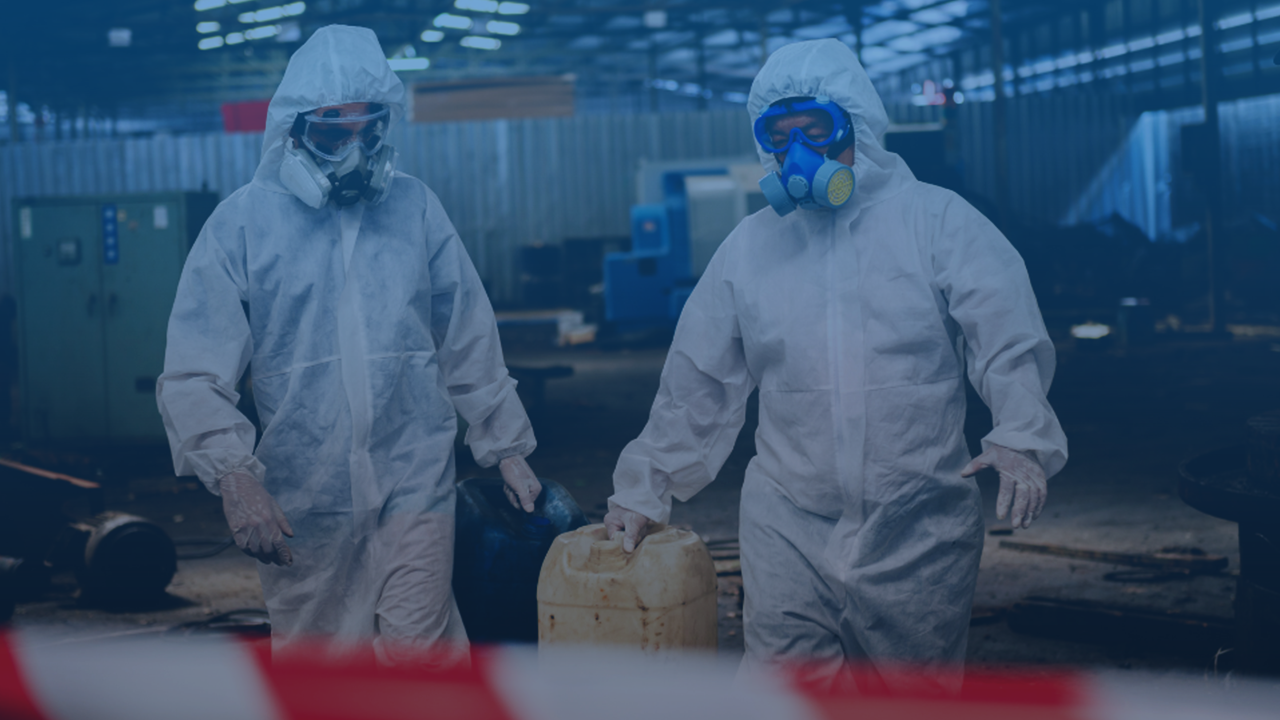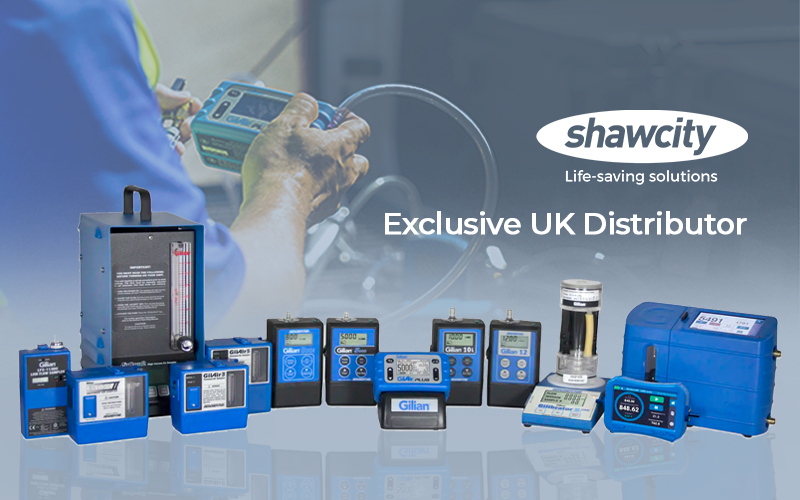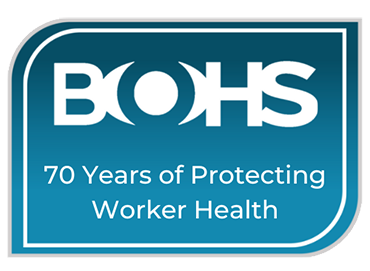Shawcity Hazmat and Emergency Response Toolkit
Emergency response teams are critical in ensuring public safety during situations involving the release or potential release of hazmat (hazardous materials).
Hazardous materials encompass a wide range of substances that, due to their chemical, physical, or biological nature, can pose significant risks to human health, property, or the environment. These include chemicals, gases, flammable liquids, radioactive materials, etc.
Prompt and effective emergency response measures are essential for minimizing these risks and preventing harm to individuals and communities.
In our latest industry article, we explore the specialised detection and monitoring equipment available from Shawcity to help safely manage hazmat incidents.
Quantitative Fit Testing
Hazmat challenges confronting firefighters and first responders are diverse. From intense fires to chemical leaks, some of the deadliest threats are invisible. In such hazardous settings, it's vital that Respiratory Protective Equipment (RPE) offers unwavering protection/ It is a legal requirement in the UK to fit test RPE before use.
Quantitative fit testing offers two different types of technology: Controlled negative pressure (CNP) and ambient particle counting (APC). Both offer a numerical measurement or fit factor as to how well a respirator seals to the face, as opposed to qualitative fit testing where a simple pass or fail is based on the subject’s ability to taste a bitter or sweet aerosol agent.
CNP technology was developed by OHD and is available in the QuantiFit2 unit, which uses only air as a challenge agent. A truly portable device, the unit has a rechargeable battery, which means the fit test can be taken out to the team in the field. CNP fit testing requires no consumables or specific test environment conditions and can be used indoors or outdoors. Adhering to the HSE protocol referenced in INDG 479, QuantiFit2 is ideal for half- and full-face respirators, but not suitable for FFFP masks.
Tried and trusted by many leading fire departments and emergency services worldwide, including the US Navy, the technology is also rapidly gaining popularity in the UK.
APC technology is regarded as the traditional method for fit testing. Also suitable for the hazmat and emergency response sectors because it fit tests all respirator types, the APC method can only be used in controlled environmental conditions, as it counts the number of particles present inside and outside the respirator.
From Q4 2024, OHD’s AeroFit APC fit testing system will be available from Shawcity, which will introduce the very latest developments in APC technology.
PIDs as hazmat response tools
Photoionization detectors (PIDs) play a crucial role in hazmat monitoring by detecting and measuring volatile organic compounds (VOCs) and other hazardous gases in the air. These portable devices are essential tools for first responders and hazmat teams, allowing them to quickly assess the presence of potentially harmful substances in the environment during emergencies.
PIDs work by ionizing gas molecules in the air, which causes them to become positively charged ions. These ions can then be measured and quantified to determine the concentration of hazardous gases present. PIDs are highly sensitive and can detect a wide range of VOCs, making them versatile instruments for hazmat monitoring applications.
The data provided by PIDs informs decision-making during hazmat incidents, helping responders determine the appropriate response actions, such as further speciation, evacuation, containment, or decontamination.
Fire Investigation Kit
The ION Science Fire Investigation kit with the Tiger XT or Tiger XTL has been specifically designed to provide quick and accurate detection of VOCs within an arson investigation.
Both instruments are ready to use within seconds and can detect hydrocarbon compounds used as accelerants such as those found in petrol, alkanes and cycloalkanes
Detecting 750 gases and toxic compounds down to 1 part per billion (ppb) up to 20,000 parts per million (ppm), the Tiger XT responds to dangerous compounds in just two seconds and clears down just as quickly, alerting users with an audio-visual and vibration alarm.
Thanks to its patented Fence Electrode Technology and anti-contamination design the Tiger XT ensures optimal performance within humid and heavily contaminated atmospheres, extending run time in the field.
MiniRAE 3000+
Whether for industrial hygiene, leak detection, or HazMat response, the MiniRAE 3000+ from Honeywell delivers one of the most advanced VOC monitoring capabilities.
It provides an extended detection range from 0-15,000 ppm, a rapid three-second response time, built-in correction factors for more than 200 compounds and can measure one of the highest levels of ionizable chemicals available on the market.
Workers can quickly measure VOCs and wirelessly transmit real-time data to a command centre up to 3km away, with a dedicated App for enhanced data logging capabilities.
ppbRAE 3000+
Also by Honeywell, the ppbRAE is trusted by many operators in hazmat response, CBRNE, civil defence, oil and gas refineries. Using built-in correction factors for more than 200 compounds, the ppbRAE 3000+ is one of the most advanced handheld VOC monitors for parts-per-billion (ppb) detection. It measures the presence of VOCs from 1ppb-10,000ppm with a three-second response time.
Personal PIDs
For extra protection, emergency responders can choose to wear personal monitoring devices to ensure their exposure limits are not exceeded.
Comfortable and unobtrusive to wear, Cub from ION Science is the smallest, lightest, personal PID gas monitor available. It has a dynamic range of 1 ppb to 5000 ppm, measuring 480 selectable compounds. The CubTAC ppm variant with 10.0 eV lamp accurately detects total aromatic compounds (TACs), including benzene and both models can be upgraded with ppb sensitivity.
personal PID gas monitor available. It has a dynamic range of 1 ppb to 5000 ppm, measuring 480 selectable compounds. The CubTAC ppm variant with 10.0 eV lamp accurately detects total aromatic compounds (TACs), including benzene and both models can be upgraded with ppb sensitivity.
The ToxiRAE Pro PID from RAE Technologies is a small, compact personal monitor with the addition of a man-down alarm. It can promptly detect and accurately monitor over 300 VOCs with an onboard library of 190 correction factors.
Support from Shawcity
Ensuring that a PID sensor is set up correctly for the specific site application is critical and should never be second-guessed. Slight errors such as calibration response factors, gas response factors or lamp types can also cause a lot of confusion within PID readings and can offer false data. Competence training is essential and is free as part of the service from Shawcity.
Our extensive portfolio of environmental instruments is available to hire or buy. Contact us for more information or to arrange a free consultation, demonstration or site visit:
01367 899553
solutions@shawcity.co.uk

-1.png)









